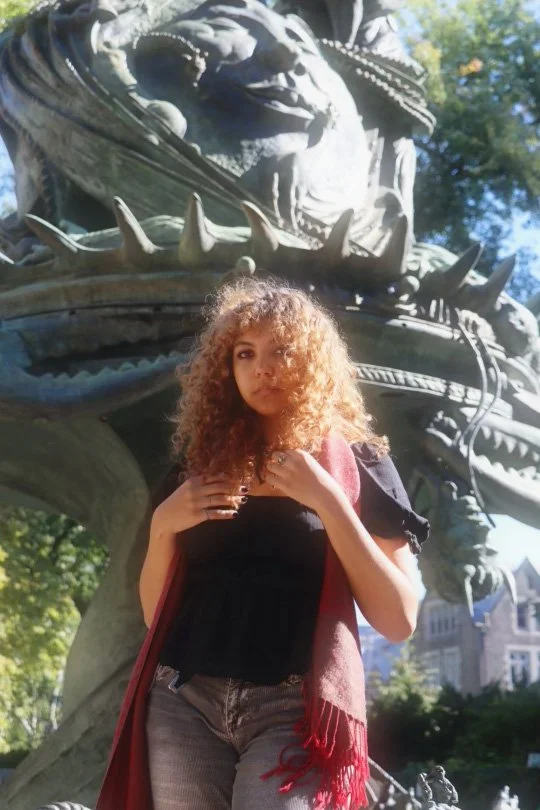
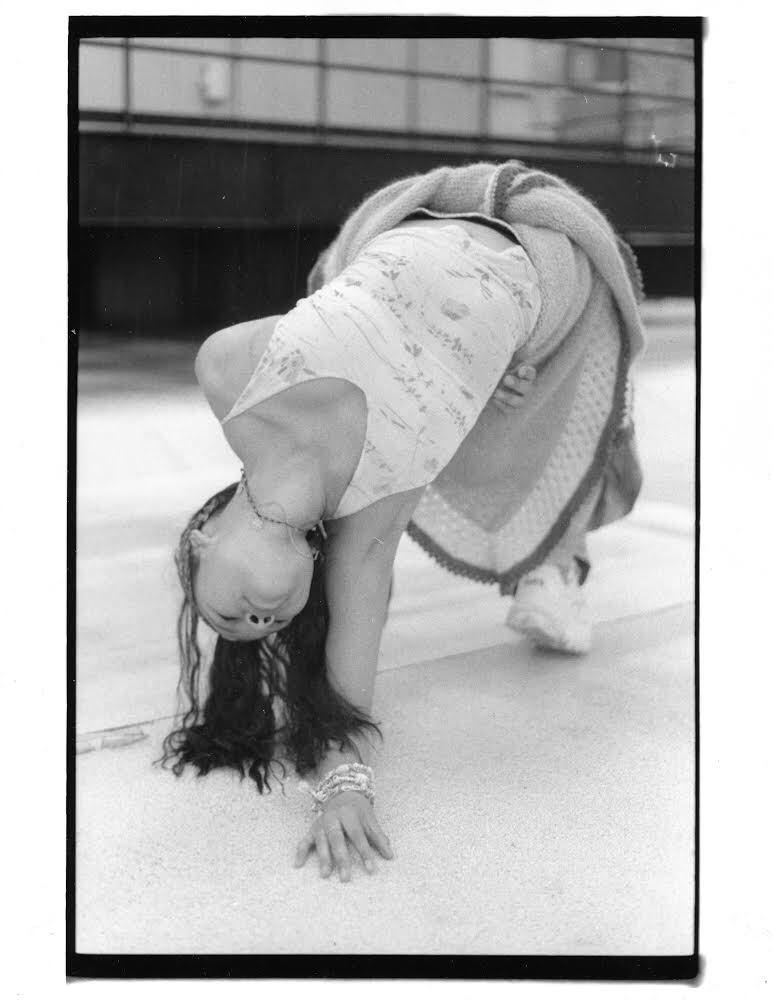
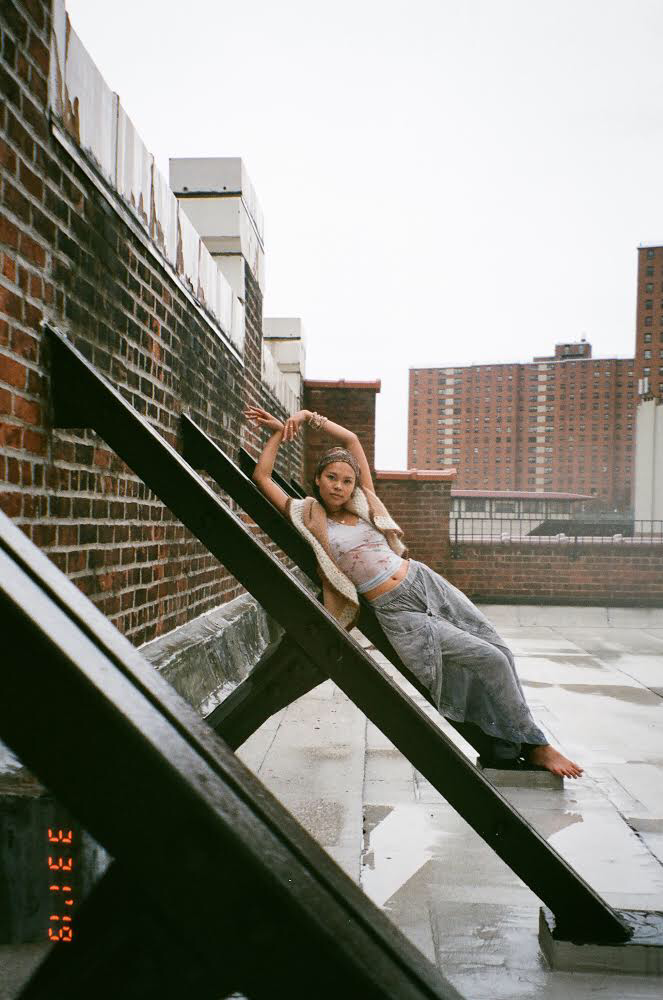
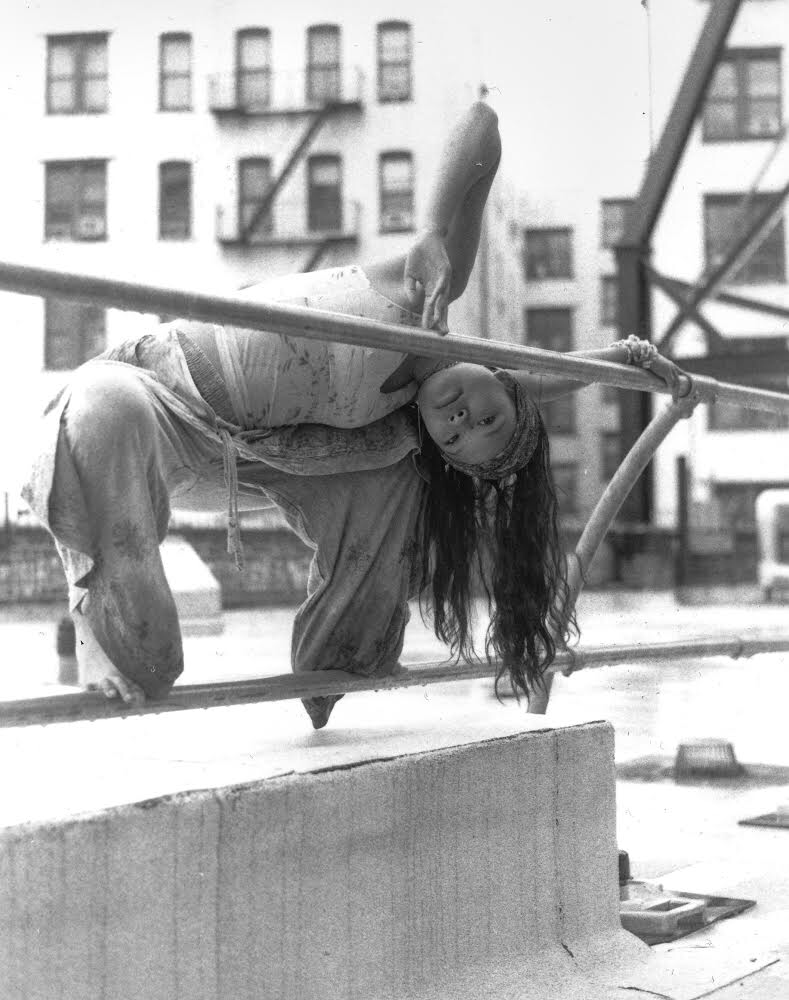
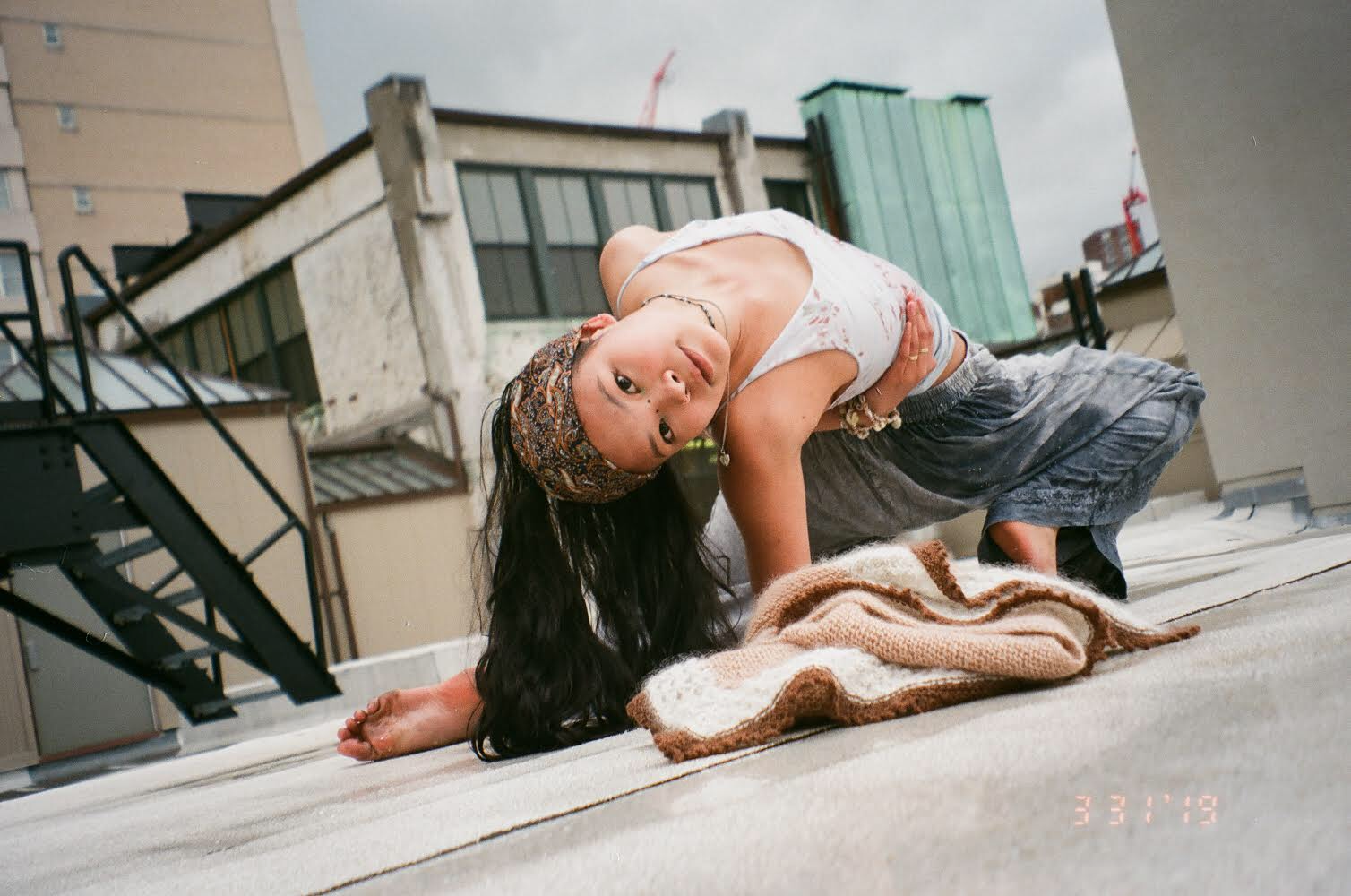
Photographs by Margaret Maguire
Interview by Morgan Becker
Introduce yourself and your art.
I’m Naomi, I’m an artist working in 2D and digital media like drawing, painting, and photo/collage; I also like to build sculptures and ceramic objects. I’m a sophomore at Barnard, majoring in art history with a concentration in visual arts.
In my work, I explore how artifacts, images, symbols and the body can be vehicles for expressing and exploring aspects and levels of identity. I also think about things like the nature of physical, mental, spiritual and divine energy and how they function eternally, and in our own experiences of [an] inner and [an] outer universe. That stuff is pretty incomprehensible, but it keeps me grounded to explore questions I have about it through art.
Tell me about the bigger components of your identity. Where did you grow up? Who are the most important people in your life?
I was born in New York and my family moved to London when I was in primary school, and then to New Haven, Connecticut, which has been home for me since high school. Throughout growing up, moving around, and finding my place and sense of identity as a first-generation American, I’ve always been able to come back to my family. The cultures of my South Korean mother and Jamaican father ground and support me in a sense of community and belonging. I’m so grateful for my family, both gifted and chosen, especially the powerful and nurturing female and femme forces that inspire me and guide me. It’s like a tribe—that’s been really important to me.
You talk about art’s ability to heal—has it always been a restorative practice for you, or did you come to realize those effects as time has progressed?
Art has been something that has been really helpful for me to come back to, and use as a healing practice, to deal with mental, emotional, and spiritual issues in my life. I’ve been realizing that a lot of the questions or hurt I might encounter when dealing with those things comes in cycles. My relationship with art has evolved with me and continued to teach me throughout those cycles, so I know that this practice will be part of my life for a while. Often I’ll return to a piece after making it and learn things about myself and parts of my mind that I wasn’t consciously exploring while making it.
For me, creating art and building things helps me to make sense of this current experience I’m having—existing in this body, in this life, I mean. It helps me to recognize, appreciate, and understand the encounters, desires, fears, and traumas that make me who I am, and cause me to feel and act a certain way. It’s really interesting to me to recognize patterns of symbols and ideas that sneak out of my subconscious and manifest in my work. I’m realizing how effective the visual language that I’m developing is as a means of expressing my ideas about the world, and existence as a whole—as well as my personal place in the context of everything.
In your artist statement, you bring up dreams as an influence in your work. It seems like you also draw from the natural world and its tangible, living aspects. Do you feel like there’s a tension to navigate between the subconscious and reality?
The process of making art, for me, is similar to dreaming because I’m taking elements of my experience in real life—interactions with the natural, physical world, and with people around me—and repurposing them. A lot of the time, going into creating work, I’m not really thinking about what I want to do specifically. Sometimes different symbols or scenes will come to mind, and I’ll arrange them in a way that makes sense to me. Or I’ll base the way that those elements interact on my observations of how things work in real life, if that makes sense. I feel like that is a similar process to how my dreams take shape. So the process of making art isn’t really a conscious thing for me. I can see and understand how my mind works after I’ve made something, go back to it, and try to make sense of it.
Is it difficult for you to do commissioned work then, when someone already has an idea of what they want you to create?
It’s definitely a different experience, making my own work and doing commissioned work, because my art deals with very personal themes. With commissions, I focus more on making work that is appropriate for the context of the space and the goals of who I’m making the work for.
Recently, I did a commissioned piece for an office space in San Diego, and I definitely needed to alter my style. With that project I had a lot of creative freedom, and that was awesome, but it didn’t mean I was going to, like, paint a giant mural of a naked earth lady on their wall, because that might have been confusing to have in a professional office space—even though I would have loved to do that.
For that piece, I ended up doing something on the surface of three canvases using textured acrylic paint, paper, and fabric. I included elements of my personal collage style to make three separate pieces that can stand alone but work and move together in a way that is characteristic of my style. I really enjoyed working on it, and I think that I made something that makes sense for the space and speaks to everyone.
Do you still feel the same connection to those pieces?
Yes, even in exploring techniques or content that I don’t usually work with in order to create something that other people can appreciate in their own personal way, I don’t feel like I’m going against my style. It’s a fun challenge to push a style that I might not usually use, and I’m always learning more through practice. I connect with myself and my work through the process of creating and building things, even if the content of a piece doesn’t explicitly communicate something that is very personal.
Is color important to you, and to your work?
Different colors, symbols, textures and forms hold different vibrations. In different contexts and states of interaction with each other, this vibration or energy that they hold can communicate so much meaning and emotion, at least to me. These things are central to the visual language that I’m trying to build in order to express myself, and emotions that might be hard to deal with or communicate in words or in other ways.
Do different colors have different set associations for you?
Yes, I think so. I know that there are some colors that I identify with more—maybe they’re part of my aura. I haven’t had my aura read like in a photo or anything, but for some reason I identify quite deeply with deep purples and indigos, and orange as well. Or indigo-y purple and golden-yellow, because they’re complimentary. It’s really nice and calming for me to explore the balance between different colors to create a harmony. And then lately, especially in my ‘snake-nom’ self portraits, it really only made sense for me to use a lot of green. Maybe that’s because, when reflecting on those pieces, they speak to me about nurturing energy and emotional self-preservation—and those things are connected to the some shades of green. To me, green communicates growth and health, and I associate it with the heart.
How does your work grapple with femininity? Sexuality? Spirituality? Do you associate certain colors with these abstract terms?
When I depict or talk about things like femininity, spirituality, or sexuality in my work, it’s a personal exploration of my experience with those things. I’m not trying to universally define what it means to be feminine, or how to practice spirituality and sexuality, or how to deal with trauma. A lot of the time, my art is just an inward exploration of what different things I encounter in my experience of life mean to me. I do associate different colors with, like, different energy centers in the body—as well as themes in my mind. So that [association] is useful in helping me to figure out where I need to direct my focus and energy in order to learn and to heal. But that is more of a personal device than something I’m trying to use formally in my art.
Specifically, how does your interpretation of the female form manifest in your 2D work?
I really enjoy creating wonky proportions and mangled looking positions in the bodies that I draw. I see it as a way of trying to break out of some kind of box, or challenge a set of ideas about what bodies are supposed to look like and how they are supposed to function. Identity is a super expansive concept that goes past our physical vessels, and even manifestations of our personal expression of gender. I think it’s interesting to push what that means visually.
Rather than interpreting the female form specifically, I’m exploring the function of bodies as containers for our spiritual selves and how they can feel confining at times. I draw female forms often [because] I think that they are very beautiful—and also, a body’s potential to support and birth a whole person is so incredible. Thinking about that helps me to comprehend how we are all connected at some level as parts of one constantly and eternally-evolving organism that we probably won’t ever understand.
A lot of your 3D art incorporates different textiles and textures. What’s the value in creating an object that appeals to touch, over, say, a flat drawing or photograph?
I definitely want people to interact with and respond to my work in ways that feel right for them. I’m okay with people touching things; and if you feel like a piece is asking you to explore it through touch, then I’m cool with that as long as you ask.
In ceramics, it’s really interesting to experiment with texture because it’s an index of movement, like a trace of a physical thing being there and imprinting itself in the clay with the force of the energy it was holding at the time. And then once that piece is fired, that index is there forever- or for a really long time, and can be returned to in different contexts, like a memory.
When did you start working with digital art? How has it changed your perspective or practice?
I started working with Photoshop a while ago, and it was awesome to learn how to use all of the tools to make things look [as] wild as I wanted. But I think I actually learned the most when my computer crashed, and I lost all of those programs that I used to make digital work. Because instead of re-downloading the programs again immediately, I took a little time to try and recreate certain effects through physical media. When I started exploring the how different materials could be utilized and manipulated in order to make an image to look like it had been Photoshopped, I discovered so many [material] techniques that I use all the time now.
You work within so many different mediums. What makes you decide to photograph something, rather than incorporate it into painting or ceramics? Or vice versa.
Sometimes I start with inspiration to make or communicate something specific, and if I have different options for the medium, it's about deciding which would be most effective in making that happen. But sometimes I just start with a certain material, and through working with it and exploring its visual and tactile qualities, and the different ways that it can function and speak... that’s how some things end up being produced. It really just depends, and it’s nice to not tie myself down to one technique or material. I would be pretty sad if I had to do that.
Is art more about self-expression or invoking something within the viewer?
I really love when people resonate with my art and respond to it. I make art as part of my own personal journey of self-exploration, and it’s so nice to know that others can also feel something when they experience it. It reminds me that although our experiences and ways of dealing with life are different, there is so much room for—and benefit from—us connecting with and learning from each other, our surroundings, and the universe.
How do you see your artistic style developing from where you are now?
I’m not sure, but I’m excited to see where it goes! I definitely want to work with sculpture more as well as wearable things that can be used in performance. I interested in creating work that is an immersive experience, that engages different senses as well.
Closing remarks?
I’m showing work in a group show in May, more information about that will be out later. It’s in Greenpoint on May 3rd. I post updates and things on Instagram, so people can follow if they are interested. Also, if anyone wants buy original work or commission something, they can find my portfolio and information on how to get in touch with me on either Instagram or my website. And thanks to Ratrock for giving me the space to show and talk about my art!





























